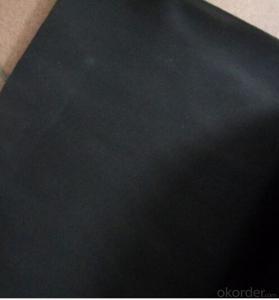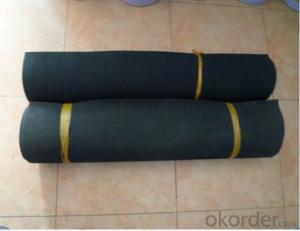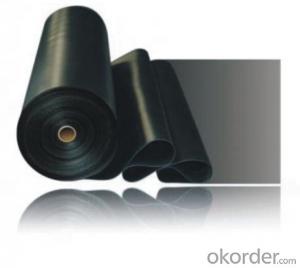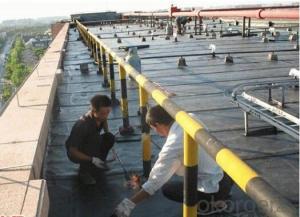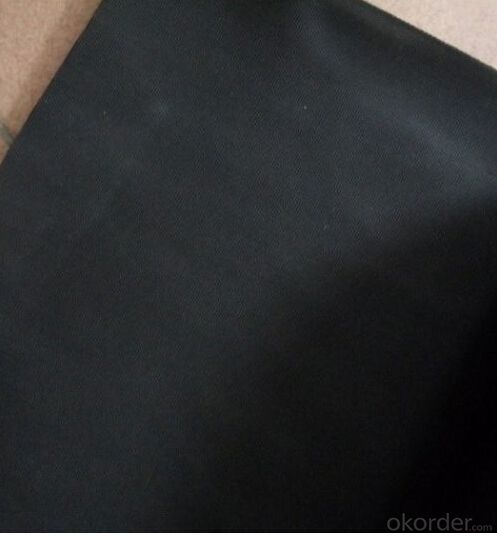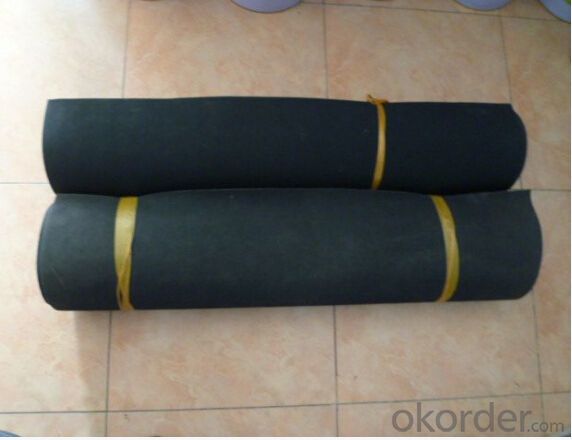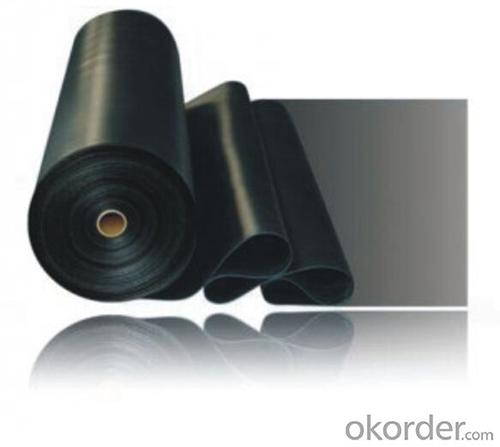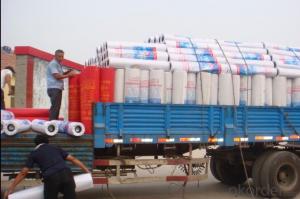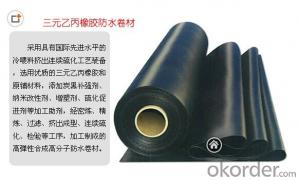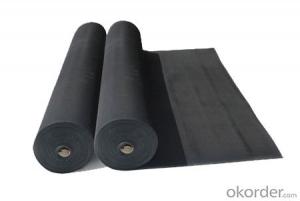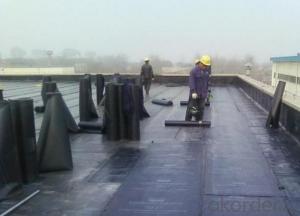Hot Sell EPDM Waterproofing Membrane Factory Price
- Loading Port:
- Qingdao
- Payment Terms:
- TT OR LC
- Min Order Qty:
- 2000 m²
- Supply Capability:
- 100000 m²/month
OKorder Service Pledge
OKorder Financial Service
You Might Also Like
EPDM waterproofing Rubber membrane
1. Introduction of EPDM Waterproofing Membrane:
EPDM Waterproofing Membrane is the modified materials which is widely used at home and abroad in the kinds of roofs, tunnel, basement such sorts of constructions' waterproofing.
They are based upon EPDM rubber with modifier, softener and accelerant assistants added to provide flexibility and stability . Through the precise ingredients, mixing, extrusion, rolling, curing processes to made of modified EPDM Waterproofing material with high strength and high flexibility.
2. Specification of EPDM Waterproofing Membrane:
Type | EPDM Waterproof Membrane | ||
Material | EPDM Rubber | ||
Thickness | 1.2mm | 1.5mm | 2.0mm |
Weight(kg/m2) | 1.54-1.58 | 1.79-1.83 | 2.25-2.29 |
Size | 1.2m(width) * 20m(length)/roll | ||
Type | Vulcanized & Weldable | ||
Pattern | Non-reinforced(homogeneous) | ||
Packing | 24sqm/roll, with plastic bag | ||
Color | Black | ||
Application | Roof, basement, pond, Lake, steel structure roof, swimming pool, underground, tunnel, etc | ||
3. Product Features of EPDM Waterproofing Membrane:
1. Great tensile strength,long-range elasticity and aging resistant.
2. Excellent heat reisistant and can be used under -70°C~~+110°C .
3.Good anti-corrosion, ultraviolet resistant, root penetration resistance
4.Long life use over 50 years and used longer 100 years or more under the condition of buried in the ground.
5.Light and easy to install.
4. Application of EPDM Waterproofing Membrane:
(1) Roofs, Basement, Toilets
(2) Industrial and civil building waterproofing
(3) Geosynthetic liner for swimming pool, channels, irrigation system
(4) Especially suitable for projects with high requirements in durability, anti-corrosion and deformation
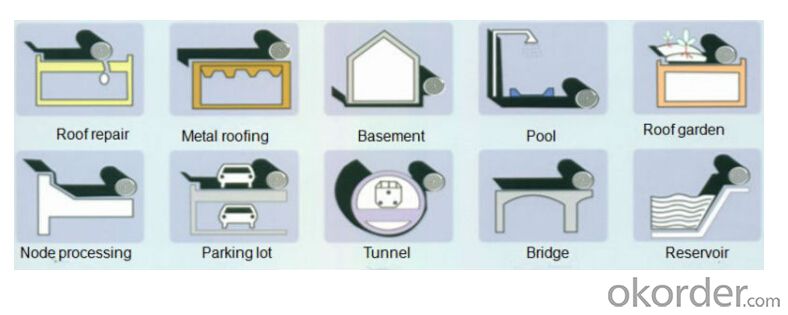
4. Some photos:
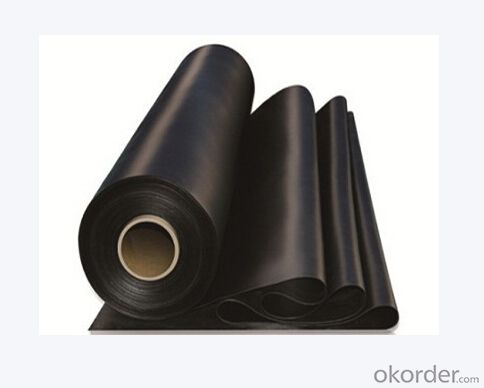
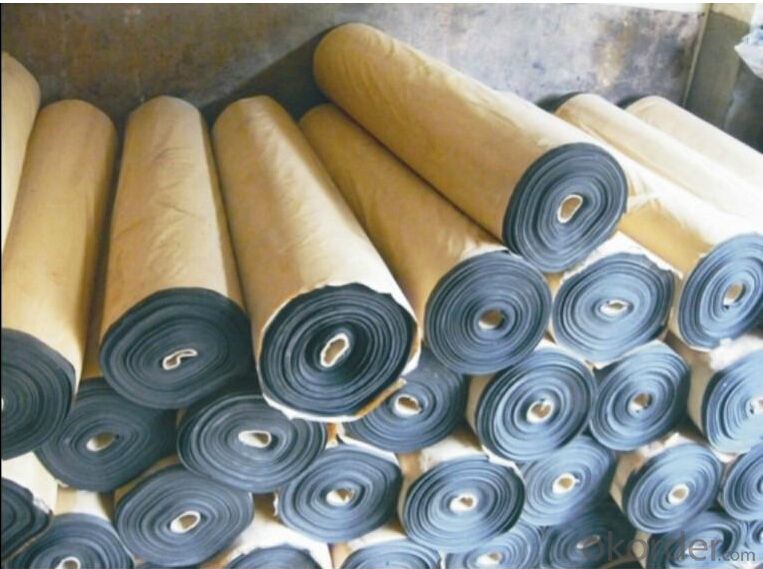
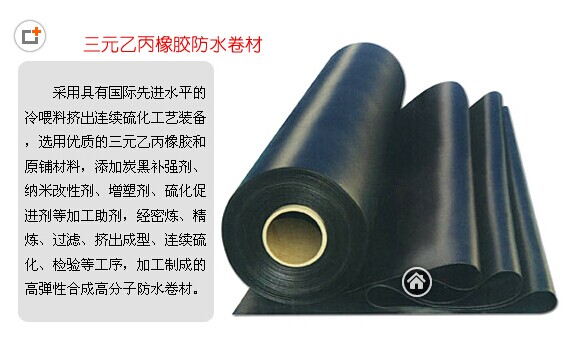
- Q: Are waterproofing membranes suitable for wastewater treatment plants?
- Yes, waterproofing membranes are suitable for wastewater treatment plants. Wastewater treatment plants deal with the treatment and processing of wastewater, which contains a variety of chemicals, contaminants, and bacteria. These substances can be highly corrosive and can cause damage to the infrastructure of the plant if not properly protected. Waterproofing membranes provide an effective barrier against water and chemical penetration, preventing leaks, seepage, and corrosion. They can be applied to various areas of the plant, including tanks, basins, pipelines, and concrete structures. Additionally, waterproofing membranes are durable, long-lasting, and can withstand the harsh conditions and chemicals present in wastewater treatment plants. Therefore, using waterproofing membranes in wastewater treatment plants is a recommended practice to ensure the integrity, longevity, and efficiency of the infrastructure.
- Q: Can a waterproofing membrane be used for industrial facilities and factories?
- Yes, a waterproofing membrane can be used for industrial facilities and factories. Industrial facilities and factories often have areas that are exposed to moisture, such as basements, rooftops, and storage areas. These areas are prone to water leakage and damage, which can result in costly repairs and downtime. A waterproofing membrane is a highly effective solution for protecting these areas from water infiltration. It is a flexible and durable barrier that is applied to surfaces to prevent water from penetrating through. Waterproofing membranes are designed to withstand various environmental conditions, including temperature changes, UV exposure, and chemical exposure, making them suitable for industrial settings. By installing a waterproofing membrane, industrial facilities and factories can prevent water damage, mold growth, and structural deterioration caused by moisture. This helps to maintain a safe and functional environment for workers and equipment, while also ensuring the longevity of the facility. Additionally, a waterproofing membrane can help to improve energy efficiency by reducing heat loss through insulation and preventing water-related damage to HVAC systems. Overall, using a waterproofing membrane in industrial facilities and factories is a practical and cost-effective solution for ensuring the protection and longevity of the facility.
- Q: How does a waterproofing membrane handle cracks in the substrate?
- A waterproofing membrane is designed to handle cracks in the substrate by providing a barrier that prevents water from penetrating through the cracks. The membrane is typically made of a flexible material, such as rubber or synthetic polymers, which allows it to stretch and move with the substrate without tearing or breaking. When cracks occur in the substrate, the membrane is able to bridge over the cracks and maintain its integrity, preventing water from seeping through. In some cases, the membrane may have a self-healing property, where it can seal minor cracks on its own, ensuring continuous protection against water ingress. To further enhance its crack-bridging capability, the waterproofing membrane may be reinforced with fibers or fabric layers. These reinforcements increase the tensile strength and flexibility of the membrane, allowing it to effectively span larger cracks or accommodate movement in the substrate without compromising its waterproofing performance. It is important to note that the extent to which a waterproofing membrane can handle cracks in the substrate depends on various factors, such as the type and size of the cracks, the movement of the substrate, and the quality of the membrane installation. It is essential to follow the manufacturer's guidelines and ensure proper surface preparation and installation techniques to maximize the membrane's ability to handle cracks and provide long-lasting waterproofing protection.
- Q: Can a waterproofing membrane be used for underground stormwater detention systems?
- Yes, a waterproofing membrane can be used for underground stormwater detention systems. Waterproofing membranes are commonly used to prevent water penetration and can be effective in containing stormwater within the underground detention system.
- Q: How does a waterproofing membrane perform in areas with high temperature fluctuations?
- A waterproofing membrane performs well in areas with high temperature fluctuations due to its ability to withstand expansion and contraction without compromising its integrity. The membrane's flexibility and durability allow it to adapt to the changing temperatures, preventing cracks and leaks that could lead to water damage.
- Q: Are waterproofing membranes resistant to soil chemicals?
- Waterproofing membranes are commonly resistant to soil chemicals. These membranes are created to act as a barrier against water and moisture, and they are often manufactured using materials that can resist various chemicals found in soil. This resistance aids in safeguarding the membrane from deterioration or harm caused by exposure to soil chemicals. Moreover, waterproofing membranes are frequently subjected to testing and certification to ensure compliance with industry standards and regulations, including resistance to soil chemicals. Nevertheless, it is important to acknowledge that the degree of resistance may vary depending on the particular type and quality of the waterproofing membrane employed. Thus, it is crucial to select the appropriate membrane that is specifically designed to endure the soil conditions and chemicals present in the project area. Seeking advice from a professional or the manufacturer can offer further guidance on the most suitable waterproofing membrane for a specific application.
- Q: Are waterproofing membranes resistant to hail damage?
- Waterproofing membranes are designed to provide protection against water intrusion and are not typically resistant to hail damage. Hail can cause significant damage to roofing materials, including waterproofing membranes, by puncturing or tearing them. This can compromise the integrity of the membrane and lead to leaks and water infiltration. While some membranes may have a certain level of resistance to hail damage, it is important to note that no waterproofing membrane can provide complete protection against all types of hailstones. Therefore, it is advisable to take proper precautionary measures, such as installing additional protective measures like hail guards or considering impact-resistant membranes, to minimize the potential damage caused by hail.
- Q: Does a waterproofing membrane require any specific surface preparation for tile installations?
- Yes, a waterproofing membrane does require specific surface preparation for tile installations. The success of the waterproofing membrane and the longevity of the tile installation depend on proper surface preparation. Before installing a waterproofing membrane, it is crucial to ensure that the surface is clean, dry, and free from any contaminants such as dust, debris, oil, grease, or any loose or crumbling materials. The surface should be thoroughly cleaned and any existing tile, adhesive, or grout should be removed if necessary. In addition to cleanliness, it is important to make sure the surface is smooth and even. Any uneven areas or imperfections should be leveled and patched using a suitable patching compound. This will help prevent any water from pooling or seeping underneath the waterproofing membrane, which could lead to potential issues such as leaks, mold growth, or damage to the tile installation. Furthermore, it is essential to ensure that the surface is structurally sound and stable. If there are any cracks, weak areas, or signs of instability, they should be addressed and repaired before installing the waterproofing membrane. This will help provide a solid foundation for the tile installation and prevent any future problems. Overall, proper surface preparation is crucial for the success of a waterproofing membrane and tile installation. It ensures a clean, smooth, and stable surface, which is necessary for the membrane to adhere properly and provide effective waterproofing. Following the manufacturer's guidelines and consulting with a professional if needed can help ensure the correct surface preparation for a long-lasting and reliable tile installation.
- Q: Can a waterproofing membrane be used for planter boxes or green roofs?
- Certainly, planter boxes or green roofs can benefit from the utilization of a waterproofing membrane. It is strongly advised to implement a waterproofing membrane in these scenarios in order to avoid any water seepage or harm to the underlying structure. Essentially acting as a safeguard, the waterproofing membrane serves to prevent water infiltration into the planter boxes or green roofs, therefore preventing potential complications like decay, mold, or structural deterioration. By skillfully sealing the area, the waterproofing membrane guarantees that the water remains within the designated area, which in turn fosters robust plant growth and safeguards the structural stability.
- Q: Can a waterproofing membrane be used in areas with chemical exposure?
- Yes, a waterproofing membrane can be used in areas with chemical exposure. However, it is essential to choose a membrane specifically designed to withstand the chemicals present in the environment. The membrane should have chemical resistance properties and be compatible with the specific chemicals it will be exposed to in order to provide effective protection against water damage and chemical degradation.
Send your message to us
Hot Sell EPDM Waterproofing Membrane Factory Price
- Loading Port:
- Qingdao
- Payment Terms:
- TT OR LC
- Min Order Qty:
- 2000 m²
- Supply Capability:
- 100000 m²/month
OKorder Service Pledge
OKorder Financial Service
Similar products
Hot products
Hot Searches
Related keywords
